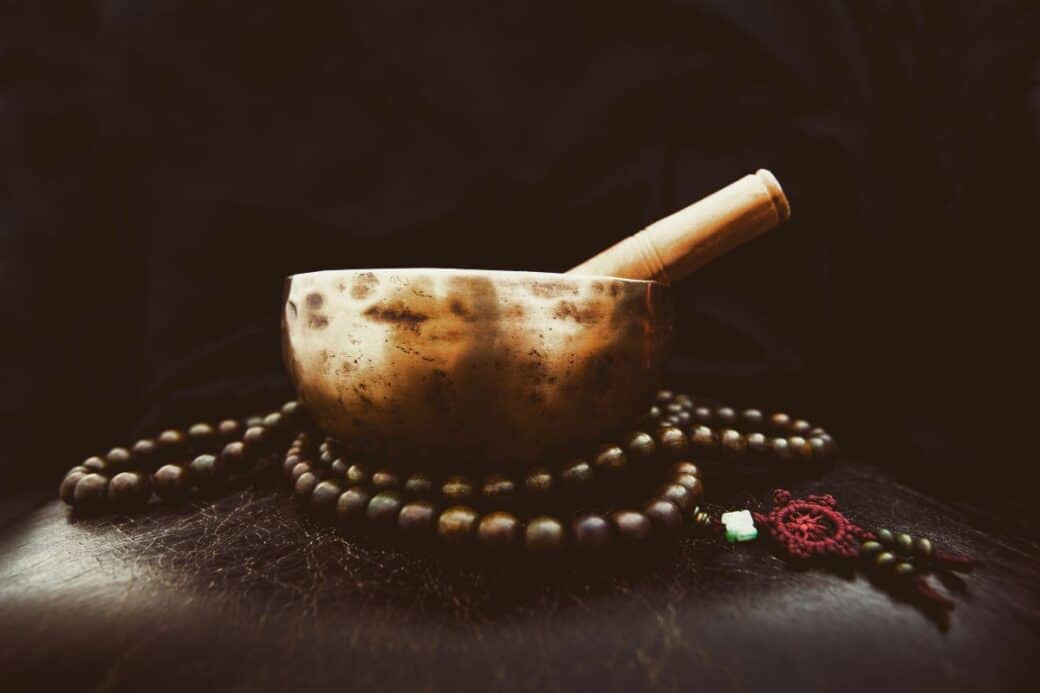Join us on a fascinating journey as we uncover the enchanting process behind crafting those mesmerizing singing bowls. In this article, you will discover the intricate steps involved in the creation of these beautiful instruments, from the carefully chosen materials to the skilled craftsmanship that brings them to life. Prepare to be amazed as we delve into the world of singing bowl production, revealing the harmonious secrets hidden within these shimmering works of art.

How Are Singing Bowls Made: Understanding Singing Bowls
Definition of a singing bowl
A singing bowl is a musical instrument that originated in Asia, specifically in the Himalayan region. It is a bowl-shaped metal vessel with a rim that produces a unique and soothing sound when struck or played with a mallet. The name “singing bowl” comes from the prolonged and melodious tone it creates, resembling the humming or singing sound.
Cultural significance of singing bowls
Singing bowls have deep cultural significance, primarily in Tibetan and Nepalese cultures. They have been used for centuries in spiritual practices, meditation, and rituals. Singing bowls are believed to have the power to connect individuals with their inner selves, promote relaxation, and enhance mindfulness. They are also used for healing and are believed to restore harmony and balance to the mind, body, and spirit.
Typical use of singing bowls in meditation and rituals
One of the most common uses of singing bowls is in meditation practices. The sound produced by the singing bowl helps individuals enter a state of deep relaxation and focus. During meditation, the bowl is often struck gently or played with a mallet while the person sits in a peaceful environment, allowing the vibrations and harmonious sound to calm the mind and facilitate a meditative state.
Singing bowls are also used in various rituals and ceremonies. They are often played before and after important events or rituals to purify the space and create a sacred atmosphere. The sound of the singing bowl is believed to have the ability to clear negative energy and invoke positive vibrations, making it an integral part of many spiritual practices.

Materials Used in Making Singing Bowls
Common metals used
Traditionally, singing bowls were crafted using a blend of seven metals, each representing a celestial body. These metals include gold, silver, copper, iron, tin, lead, and mercury. Today, singing bowls are predominantly made from fewer metals due to health and environmental concerns. Common metals used include bronze (a mix of copper and tin), brass (copper and zinc), and sometimes silver or gold plating for decorative purposes.
Significance of each metal
In traditional singing bowl making, each metal used holds symbolic significance. Gold represents the sun, silver symbolizes the moon, copper embodies Venus, iron represents Mars, tin symbolizes Jupiter, lead embodies Saturn, and there is a debate surrounding mercury’s significance. These metals are believed to have unique properties and energetic qualities that contribute to the overall sound and vibrations produced by the singing bowl.
Other materials occasionally used
In addition to metal, singing bowls can also incorporate other materials for aesthetic or functional purposes. Wooden or leather mallets are commonly used to strike or rub the rim of the bowl to create sound. Some singing bowls may have handles or decorative elements made from wood, gemstones, or precious metals. These additional materials add visual appeal and personalization to the singing bowls, making them unique and individualized.
The Process of Making a Singing Bowl
The initial shaping of the metal
Crafting a singing bowl starts with the shaping of the metal into a bowl-like form. Skilled artisans heat the metal alloy and hammer it into shape. This process requires precision and attention to detail to create the desired thickness, shape, and curvature. The artisans often use various hammers, anvils, and molds to ensure the consistent shaping of the metal, resulting in a well-crafted singing bowl.
The fine-tuning process
Once the basic shape is achieved, the artisans proceed to fine-tuning the singing bowl. This step is crucial as it determines the sound quality and pitch of the bowl. Artisans use specific techniques, such as striking different areas of the bowl while listening carefully to the sound produced. Through an iterative process, they remove or add small amounts of metal to achieve the desired tone and harmonics. This fine-tuning requires a keen ear and deep understanding of the musical properties of the bowl.
The finishing touches
After the bowl is shaped and tuned, it undergoes the finishing touches. Artisans meticulously smooth out any imperfections, ensuring a flawless surface. They may also add decorative engravings, carvings, or embellishments to enhance the aesthetic appeal of the bowl. The finishing touches bring the singing bowl to its final form, ready to generate beautiful melodies and serve its purpose.
Skill Needed to Craft a Singing Bowl
Craftsmanship involved in shaping the bowl
Crafting a singing bowl requires exceptional craftsmanship and metalworking skills. Artisans must possess the ability to shape and mold the metal with precision, using traditional techniques passed down through generations. They must be adept at hammering, annealing, and annealing the metal to achieve the desired shape and thickness. The craftsmanship involved ensures that the singing bowl not only looks beautiful but also resonates with captivating sound.
The auditory skill needed for fine-tuning
A crucial skill in singing bowl making is auditory discernment. Artisans must possess a deep understanding of musical tones, pitches, and harmonics to fine-tune the bowl accurately. Through their cultivated sense of hearing, they can detect the subtle changes in sound and intuitively know how to adjust the bowl accordingly. This auditory skill, honed through years of practice and experience, is essential to create singing bowls with exquisite sound quality.
The artistry involved in finishing touches
The finishing touches on a singing bowl require an artistic eye and attention to detail. Artisans use their creative flair to add decorative engravings or carvings that reflect the cultural symbolism and personal touch to the bowl. The artistry involved in the finishing touches transforms the singing bowl from a mere musical instrument to a visually captivating work of art.
Various Designs of Singing Bowls
The typical designs found
Singing bowls come in various designs, but some common types can be found. The classic design features a rounded bottom with a flared rim, resembling a bell shape. Another design has a flatter bottom with straighter sides, creating a more cylindrical shape. Additionally, there are singing bowls with decorative handles or etched designs that add character and uniqueness to the overall appearance.
The meaning behind these designs
The different designs of singing bowls hold symbolic meanings. The bell-shaped design is reminiscent of the sacred bells found in temples and monasteries, symbolizing spirituality and divine connection. The cylindrical design, on the other hand, represents stability and grounding, reflecting a different aspect of contemplation and meditation practices. The decorative handles or etchings often depict traditional or spiritual motifs, adding depth and intention to the overall design.
The customization options available
Singing bowls can also be customized to meet individual preferences and needs. Some artisans offer personalized engravings or carvings that tell a person’s story or convey a specific intention. Customizations may also include the choice of different metals, sizes, or even gemstone inlays. These customization options allow individuals to find or create a singing bowl that resonates with their unique style and spiritual journey.
Tuning of Singing Bowls
The elements that affect a bowl’s tune
Several factors can affect a singing bowl’s tune. The thickness and composition of the metal, as well as its shape, influence the sound quality and resonance. The overall size of the bowl also affects the pitch, with larger bowls producing lower tones and smaller bowls producing higher tones. Additionally, the craftsmanship in creating even thickness and smooth edges contributes to the bowl’s tune and harmonics.
The methods of fine-tuning a bowl
Fine-tuning a singing bowl involves various methods. Artisans may gently tap the bowl while listening closely to the sound produced to assess its pitch and harmonics. Through this iterative process, they adjust the thickness or add small amounts of metal to specific areas to achieve the desired tune. Some artisans may also use machine-based methods to fine-tune the bowls, ensuring consistent sound quality across their products.
The relationship between size and sound of a bowl
The size of a singing bowl has a direct relationship with its sound. Larger bowls produce deeper, more resonant tones, while smaller bowls create higher, more delicate tones. The size also affects how long the sound sustains and the volume it produces. This variety in sizes allows for a diverse range of tones and soundscapes, catering to individual preferences and needs.
Quality of Singing Bowls
How quality is determined
The quality of a singing bowl is determined by several factors. One significant factor is the craftsmanship involved in shaping and fine-tuning the bowl. A well-crafted bowl will have even thickness, smooth edges, and consistent resonance throughout its surface. The sound produced by the bowl is also an indicator of its quality, with high-quality bowls producing clear, pure tones with sustained vibrations. Additionally, the materials used, such as high-quality metals, contribute to the overall quality and durability of the singing bowl.
The impact of materials on quality
The choice of materials greatly impacts the quality of a singing bowl. High-quality metals, such as a well-blended bronze or brass, result in better sound quality and resonance. These metals are durable and long-lasting, ensuring the longevity of the singing bowl. In contrast, lesser-quality metals may produce a dull or inconsistent sound and may not withstand the test of time. The quality of the metals used in making the singing bowl plays a crucial role in the overall quality and value of the instrument.
How craftsmanship affects the quality
Craftsmanship is a vital determinant of the quality of a singing bowl. The skill, attention to detail, and experience of the artisans significantly influence the final product. A skilled artisan can shape the metal precisely, fine-tune the bowl to perfection, and add unique artistic elements that elevate the overall quality and beauty of the bowl. The craftsmanship ensures that the singing bowl stands out in terms of both its visual appeal and its sound quality, making it a highly valued and sought-after instrument.
The Role of Singing Bowls in Healing
The theory behind sound healing
Sound healing is based on the belief that sound and vibrations can harmonize and balance the energy within the human body. It is rooted in ancient cultures’ understanding of sound as a powerful and transformative tool for healing and well-being. Sound healing practitioners often use singing bowls to induce a state of deep relaxation, promote stress relief, and facilitate emotional and spiritual healing.
The use of singing bowls in healing practices
Singing bowls are widely used in sound healing practices due to their unique ability to produce resonant and soothing tones. During a sound healing session, the practitioner may play the singing bowls near or on the body, allowing the vibrations to permeate the cells and energy centers. The sound and vibrations are believed to stimulate the body’s natural healing mechanisms, promote relaxation, and create a sense of balance and harmony within.
Personal stories and testimonials
Many individuals have shared personal stories and testimonials regarding the healing effects of singing bowls. People have reported experiencing deep relaxation, reduced stress and anxiety, improved sleep quality, heightened creativity, and enhanced overall well-being after engaging with singing bowls. These firsthand experiences add credibility to the role of singing bowls in promoting healing on multiple levels – physical, emotional, mental, and spiritual.
Maintaining a Singing Bowl
Recommended cleaning techniques
To maintain the vibrant sound and appearance of a singing bowl, proper cleaning techniques are essential. It is recommended to clean the bowl regularly using non-abrasive cleaners, warm water, and a soft cloth. Gently wiping the bowl in circular motions helps remove dust and debris without scratching the surface. It is important to avoid harsh chemicals or abrasive materials that can damage the bowl or alter its sound quality.
Storage advice
Proper storage is crucial for the longevity of a singing bowl. Ideally, the bowl should be stored in a padded or soft cloth bag to protect it from dust, moisture, and scratches. It is advisable to keep the bowl in a safe and dry place, away from direct sunlight or extreme temperature fluctuations. By practicing proper storage techniques, the singing bowl can be preserved for generations to come.
Tips for long-term preservation
For long-term preservation, it is recommended to handle the singing bowl with care and avoid dropping or mishandling it. Regularly inspecting the bowl for any signs of damage or wear and tear allows for early intervention and maintenance. If any damage occurs, seeking professional repair or restoration services is advisable to ensure the bowl’s continued functionality and aesthetic appeal. By caring for and preserving the singing bowl, its beauty and healing qualities can be enjoyed for years to come.
The Future of Singing Bowl Production
Industry trends
The production of singing bowls is experiencing various industry trends. As the popularity of sound healing and meditation practices continues to rise, the demand for singing bowls is increasing. This has led to a diversification in designs, customizations, and materials used to cater to different preferences and needs. Additionally, eco-friendly and sustainable practices are being embraced by some artisans and manufacturers to address environmental concerns and ensure the long-term availability of quality singing bowls.
Sustainability considerations
In response to sustainability concerns, some artisans are exploring alternative materials and production methods. The use of recycled or reclaimed metals reduces the environmental impact of singing bowl manufacturing. Additionally, some artisans source materials locally and prioritize fair trade practices, supporting sustainable and ethical supply chains. These sustainability considerations aim to preserve the cultural significance of singing bowls while minimizing their ecological footprint.
Technological advancements in production
Advancements in technology have also impacted singing bowl production. While traditional handcrafting techniques remain highly valued, some artisans have incorporated modern tools and processes to enhance efficiency and precision. Technologies like laser cutting, 3D modeling, and computer-assisted sound analysis can aid in creating consistent and high-quality singing bowls. These advancements allow for greater market accessibility and ensure the continuation of the art form in a rapidly evolving world.
In conclusion, understanding singing bowls involves recognizing their definition, cultural significance, and typical use in meditation and rituals. The materials used in making singing bowls, such as common metals and occasional additional materials, contribute to their unique characteristics. The process of crafting a singing bowl requires skill, craftsmanship, and an artistic touch. Various designs cater to personal preferences and hold symbolic meaning. The tuning, quality, and role of singing bowls in healing practices contribute to their popularity and value. Maintaining and preserving singing bowls ensures their longevity, and industry trends, sustainability considerations, and technological advancements shape the future of singing bowl production. May the soothing sounds of singing bowls continue to resonate and bring harmony into people’s lives for years to come.



